Oceanic cuisine
The cuisines of Oceania include those found on Australia, New Zealand, and New Guinea, and also cuisines from many other islands or island groups throughout Oceania.

Since the region of Oceania consists of islands, seafood is a prominent part of the diet, with vegetables such as potatoes, sweet potato, taro and yams being the main starch. Coconut, and its derivative products such as coconut milk, coconut oil and coconut sugar, is an important ingredient in the tropics of Oceania.
One of the most distinctive styles of cooking throughout Oceania is the earth oven, a method which involves laying food on hot rocks and burying it in earth. The technique originated in Papua New Guinea and was subsequently spread by Austronesian seafarers.
Australia
Other than by climate and produce availability, Australian cuisine has been influenced by the tastes of settlers to Australia.[1] The British colonial period established a strong base of interest in Anglo-Celtic style recipes and methods. Later influences developed out of multicultural immigration and included Chinese, Japanese, Malaysian, Thai, and Vietnamese cuisines. Mediterranean cuisine influences from Greek cuisine, Italian cuisine, and Lebanese cuisine influences are strong, also influences from French cuisine, Indian cuisine, Spanish cuisine, and Turkish cuisine, German cuisine, and African cuisine. Regional Australian cuisines commonly use locally grown vegetables based on seasonal availability, and Australia also has large fruit growing regions. The Granny Smith variety of apples originated in Sydney, Australia in 1868.[2] In the Southern states of Victoria and South Australia, in particular the Barossa Valley, wines and food reflects the region's traditions and heritage.[3] Australia's climate makes barbecues commonplace. Barbecue stalls selling sausages and fried onion on white bread with tomato or barbecue sauce are common.
.svg.png.webp) Australian cuisine
Australian cuisine
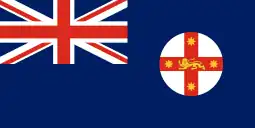 New South Wales cuisine
New South Wales cuisine Northern Territory cuisine
Northern Territory cuisine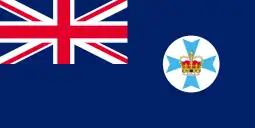 Queensland cuisine
Queensland cuisine South Australian cuisine
South Australian cuisine Tasmanian cuisine
Tasmanian cuisine.svg.png.webp) Victorian cuisine
Victorian cuisine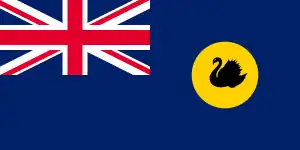 Western Australian cuisine
Western Australian cuisine
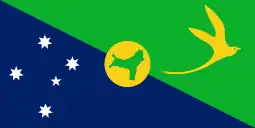 Christmas Island cuisine
Christmas Island cuisine_Islands.svg.png.webp) Cocossian cuisine
Cocossian cuisine Norfolk Island cuisine
Norfolk Island cuisine
- Australian foods and dishes
.jpg.webp) A cooked Balmain bug. Also known as the butterfly fan lobster, it is a species of slipper lobster that lives in shallow waters around Australia.
A cooked Balmain bug. Also known as the butterfly fan lobster, it is a species of slipper lobster that lives in shallow waters around Australia. Bush tucker (bush foods) harvested at Alice Springs Desert Park. Bush foods are edible native plant species and animal products used by indigenous Australians as a contemporary or traditional food.[4]
Bush tucker (bush foods) harvested at Alice Springs Desert Park. Bush foods are edible native plant species and animal products used by indigenous Australians as a contemporary or traditional food.[4] Granny Smith apples originated in Australia.
Granny Smith apples originated in Australia..jpg.webp) Halal snack pack, an Australian fast food dish of doner kebab meat and chips with sauces.
Halal snack pack, an Australian fast food dish of doner kebab meat and chips with sauces. A dish from an Australian restaurant.
A dish from an Australian restaurant. A fruit dessert dish in an Australian restaurant.
A fruit dessert dish in an Australian restaurant.
Melanesia
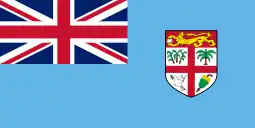 Fijian cuisine
Fijian cuisine New Caledonian cuisine
New Caledonian cuisine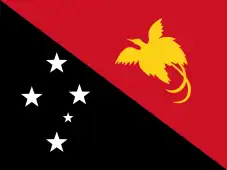 Papua New Guinean cuisine
Papua New Guinean cuisine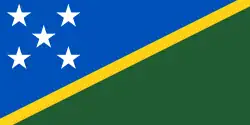 Solomon Islands cuisine
Solomon Islands cuisine Vanuatuan cuisine
Vanuatuan cuisine
- Melanesian foods and dishes
 Laplap, the national dish of Vanuatu.
Laplap, the national dish of Vanuatu.
Micronesia
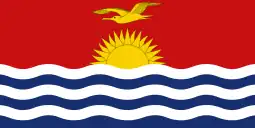 Gilbertese cuisine
Gilbertese cuisine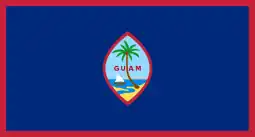 Guamanian cuisine
Guamanian cuisine Marshallese cuisine
Marshallese cuisine Micronesian cuisine
Micronesian cuisine Nauruan cuisine
Nauruan cuisine Northern Marianan cuisine
Northern Marianan cuisine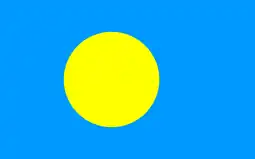 Palauan cuisine
Palauan cuisine Philippines cuisine
Philippines cuisine
- Micronesian foods and dishes
 Paniki in yellow soup.
Paniki in yellow soup.
Polynesia
Polynesian cuisine encompasses the culinary practices of Polynesia, an area notably defined as the Polynesian Triangle and occasionally, the Polynesian outliers that have been settled by Polynesian seafarers. The vast area of Polynesia has had a great influence on the cuisine itself, differing as a result of climate, geography and neighbouring island groups, such as the practice of harvesting and boiling down coconut sap in the atolls from Micronesian peoples or the harvesting and processing of sago in the outliers from Melanesians. Polynesian cuisine has been influenced by the traditional ingredients and preparations of the Polynesians, as well as European, Asian and American culinary practices. The Polynesian cuisine had influenced the Malagasy cuisine.
 American Samoan cuisine
American Samoan cuisine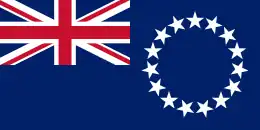 Cook Islands cuisine
Cook Islands cuisine French Polynesian cuisine
French Polynesian cuisine Hawaiian cuisine
Hawaiian cuisine
 New Zealand cuisine
New Zealand cuisine
 Niuean cuisine
Niuean cuisine Pascuense cuisine
Pascuense cuisine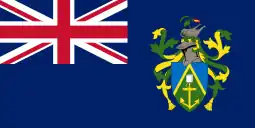 Pitcairn Islands cuisine
Pitcairn Islands cuisine Samoan cuisine
Samoan cuisine Tokelauan cuisine
Tokelauan cuisine Tongan cuisine
Tongan cuisine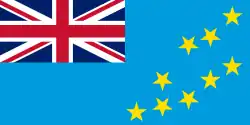 Tuvaluan cuisine
Tuvaluan cuisine Wallis and Futuna cuisine
Wallis and Futuna cuisine
See also
References
- "Australia – Aborigines And White Settlers The Breaking Down of Aboriginal Society." Janesoceania.com. Accessed July 2011.
- "Granny Smith and her Apples". Archived from the original on 2007-08-11. Retrieved 2007-08-11.
- "South Australian Food and Wine Tourism Strategy 2009 – 2014." Archived 2011-06-26 at the Wayback Machine South Australian Tourism Industry Council. Accessed July 2011.
- Lister, Peter R., Holford, Paul, Haigh, Tony, Morrison, David A. (1996). "Acacia in Australia: Ethnobotany and Potential Food Crop." Purdue University Horticulture & Landscape Architecture. Accessed July 2011.



_1_Luc_Viatour_edit.jpg.webp)
